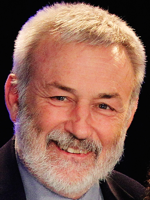Brain on a Chip: From Patterns to Circuits that Transfer Information
Building a Brain on a Chip, while certainly a wild idea, is closer to reality than is reasonable to expect, thanks to applications of both engineering and applied biology. Applications of traditional engineering technologies – signal processing, electronics, microlithography, materials science – make possible the controlled growth, recording, and stimulation of nerve cells, making addressable the goal of engineering working biological models of circuits within the brain that have importance for both fundamental and disease understanding.
This presentation begins with an overview of the effort, including developments in electrode array technology, lithographic and microtunnel techniques that can control the patterns of growth of neurons in culture, and the creation of microcircuits of discrete brain structures. These techniques are beginning to make possible neural circuits about which we can ask the natural question: “What information are they processing?”
Included are recent results from investigations in which microdissected regions of the brain are separately cultured so as to partially reconstruct a major brain circuit in the hippocampus, which is involved in learning and memory. Interestingly, biomarkers indicate that the identities of the different brain regions are preserved after culture and that at least some of their computational properties appear consistent with those inferred from in vivo animal recordings.
Biography
 Bruce Wheeler was President of the IEEE Engineering in Medicine and Biology Society, the world’s largest biomedical engineering society. He was the Editor in Chief of the IEEE Transactions on Biomedical Engineering, the largest and most cited general biomedical engineering journal.
Bruce Wheeler was President of the IEEE Engineering in Medicine and Biology Society, the world’s largest biomedical engineering society. He was the Editor in Chief of the IEEE Transactions on Biomedical Engineering, the largest and most cited general biomedical engineering journal.
Dr. Wheeler is now an Adjunct Professor in the Bioengineering at the University of California San Diego. He is Emeritus Professor at both the University of Florida, where he was the Acting Chair of the Biomedical Engineering Department, and of the University of Illinois, where he was the Founding Head of the BioEngineering Department, Professor and Associate Head of Electrical and Computer Engineering, and Chair of the Neuroscience Faculty. He received a double B.S. degree from MIT in History and Science and the M.S. and Ph.D. in Electrical Engineering from Cornell University. He has taught high school in Niskayuna, New York and elementary school in Blacksburg Virginia.
He is a Fellow of the AAAS, IEEE, BMES, AIMBE, and IAMBE.
Prof. Wheeler’s research interests lie in the application of electrical engineering methodologies, signal processing and microfabrication, to the study of the nervous system, including the microlithographic control of the patterns of growth of neurons in vitro so as to permit stimulation and recording with microelectrode arrays. Hopefully this work will lead to better understanding of the behavior of small populations of neurons and lead to better insights into the functioning of the brain. He also has had involvement in algorithm development for directional hearing aids.
Dr. Wheeler has a long time interest in education. At Illinois he was Associate Head for Undergraduate Affairs and responsible for the advising of 1600 students. He is likely the only person to create two undergraduate bioengineering degree programs (Illinois and Florida). His current position is in support of a new undergraduate program in Systems Bioengineering, which he and UCSD hope will help shape the future of biomedical engineering education.
